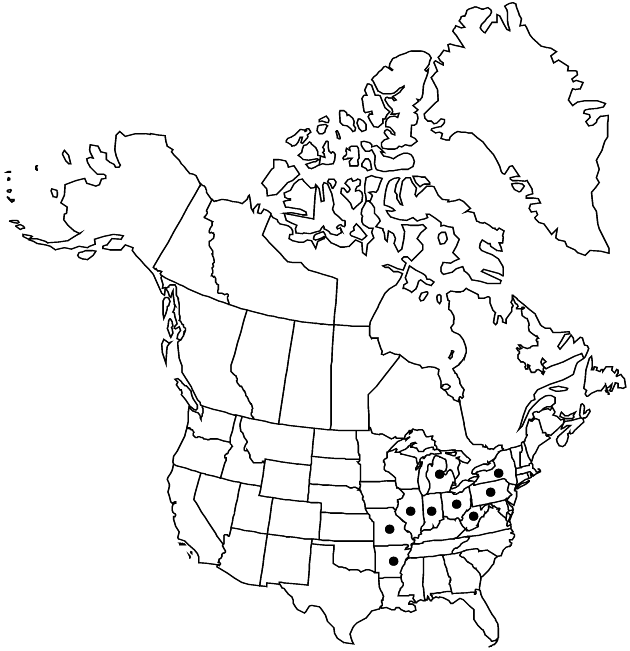Rudbeckia fulgida var. sullivantii
Rhodora 47: 400. 1945.
Common names: Sullivant’s coneflower
Endemic
Basionym: Rudbeckia sullivantii C. L. Boynton & Beadle Biltmore Bot. Stud. 1: 15. 1901 (as sullivanti)
Synonyms: Rudbeckia speciosa var. sullivantii (C. L. Boynton & Beadle) B. L. Robinson
Stems glabrous or sparsely hirsute (hairs spreading). Leaves: basal blades mostly broadly elliptic to ovate, 1.5–3 cm wide, lengths to 2 times widths, bases broadly rounded, margins sharply toothed (not incised), faces glabrous or sparsely hairy; cauline petiolate (proximal) to nearly sessile (distal), shapes ovate to lanceolate, notably smaller distally, bases rounded to attenuate, margins entire or serrate, faces glabrous or sparsely hairy. Phyllaries spreading to reflexed, 1–2 × 0.2–0.5 cm, glabrous or sparsely hairy. Receptacles 11–18 mm diam.; palea margins eciliate, faces glabrous. Ray florets 12–21; laminae 25–40 mm. 2n = 76.
Phenology: Flowering summer–fall.
Habitat: Swamps, shorelines, fens, sedge meadows
Elevation: 30–200 m
Distribution

Ark., Ill., Ind., Mich., Mo., N.Y., Ohio, Pa., W.Va.
Discussion
Selected References
None.
Lower Taxa
None.